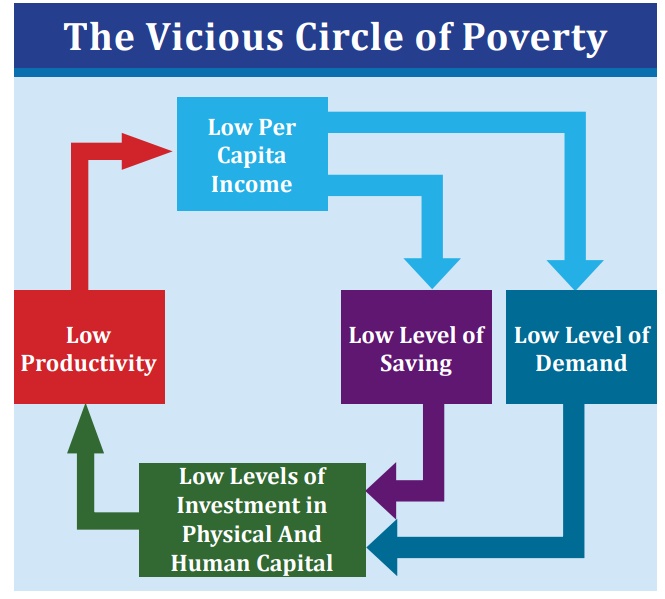Chapter: 12th Economics : Chapter 11 : Economics of Development and Planning
Vicious Circle of Poverty
Vicious Circle of Poverty

There are circular relationships known as the ‘vicious circles of
poverty’ that tend to perpetuate the low level of development in Less Developed
Countries (LDCs). Nurkse explains the idea in these words: “It implies a
circular constellation of forces tending to act and react upon one another in
such a way as to keep a poor country in a state of poverty. For example, a poor
man may not have enough to eat; being underfed, his health may be weak; being
physically weak, his working capacity is low, which means that he is poor,
which in turn means that he will not have enough to eat and so on. A situation
of this sort relating to a country as a whole can be summed up in the
proposition: “A county is poor because the country is poor”.
The vicious circle of poverty operates both on the demand side and
the supply side.
On the supply side, the low level of real income means low
savings. The low level of saving leads to low investment and to deficiency of
capital. The deficiency of capital, in turn, leads to low levels of
productivity and back to low income. Thus the vicious circle is complete from
the supply side.
The demand-side of the vicious circle is that the low level of
real income leads to a low level of demand which, in turn, leads to a low rate
of investment and hence back to deficiency of capital, low productivity and low
income.
Breaking the Vicious Circle of Poverty
The vicious circle of poverty is associated with low rate of
saving and investment on the supply side. In UDCs the rate of investment and
capital formation can be stepped up without reduction in consumption. For this,
the marginal rate of savings is to be greater than average rate of savings.
To break the vicious circle on the demand side, Nurkse suggested
the strategy of balanced growth. If investment is made in several industries
simultaneously the workers employed in various industries will become consumers
of each other’s products and will create demand for one another. The balanced
growth i.e. simultaneous investment in large number of industries creates
mutual demand. Thus, through the strategy of balanced growth, vicious circle of
poverty operating on the demand side of capital formation can be broken.
Related Topics